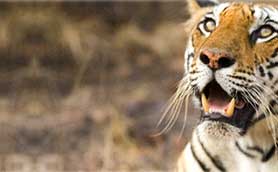 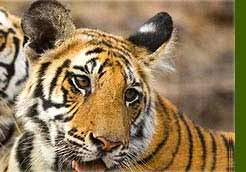 |
L-6, Samrat Bhawan, Ranjeet Nagar Commercial Complex, New Delhi - 110 008 (India) Phone : +91 9910910493 E-mail : info@indiajungletours.com |
|||||||
|
||||||||
 |
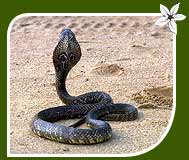 Also
known as the ‘spectacled cobra’ due to spectacle markings on the
hood, the Indian cobra is a prominent species of venomous snake among
reptiles. In a country like India, the cobra is both respected and feared;
it occupies an important place in the Hindu mythology. Indian king cobra can
be seen curled around the neck of Lord Shiva in all the temples dedicated to
the very lord. Vishnu is also depicted reposing on the body of Sheshnag, the
sacred serpent with multiple cobra heads. Even more interesting is the
tradition of cobra-and-mongoose fight that still continues in many parts of
the country. For snake charmers in India, the cobra happens to be the ‘snake
of choice’.
Also
known as the ‘spectacled cobra’ due to spectacle markings on the
hood, the Indian cobra is a prominent species of venomous snake among
reptiles. In a country like India, the cobra is both respected and feared;
it occupies an important place in the Hindu mythology. Indian king cobra can
be seen curled around the neck of Lord Shiva in all the temples dedicated to
the very lord. Vishnu is also depicted reposing on the body of Sheshnag, the
sacred serpent with multiple cobra heads. Even more interesting is the
tradition of cobra-and-mongoose fight that still continues in many parts of
the country. For snake charmers in India, the cobra happens to be the ‘snake
of choice’. | Kingdom
: Animalia Class : Reptilia Suborder : Serpentes Genus : Naja Phylum : Chordata |
Order :
Squamata Family : Elapidae Species : N. naja Latin Name : Naja naja Local Names : Heba havoo (Kannada), Mayal (Bengali) |
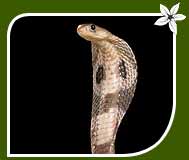 More
aggressive at nighttime, the Indian cobra prefers to live in thickly
populated areas, open forests and farmland. Nonetheless, they can also be
spotted in cities where they thrive on rodents in sewers and underground
drains. Besides rodents, its prey includes lizards, birds and frogs. After a
sharp bite, the cobra waits for its prey to be paralysed. The venom of this
snake causes the failure of nervous system or even death of the prey. As
soon as the prey becomes restless or is dead, the cobra swallows it whole.
More
aggressive at nighttime, the Indian cobra prefers to live in thickly
populated areas, open forests and farmland. Nonetheless, they can also be
spotted in cities where they thrive on rodents in sewers and underground
drains. Besides rodents, its prey includes lizards, birds and frogs. After a
sharp bite, the cobra waits for its prey to be paralysed. The venom of this
snake causes the failure of nervous system or even death of the prey. As
soon as the prey becomes restless or is dead, the cobra swallows it whole. 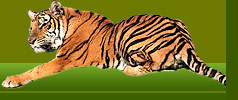 |
||
|
|
 |
||||
|
© India Jungle Tours. All Rights
Reserved (Terms
of Use) |